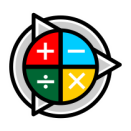THE INFLUENCE OF TEACHER'S GESTURES TO STRENGTHENING THE UNDERSTANDING OF MATHEMATICS STUDENTS
Abstract
This research examines about gestures that can be used in learning math in the classroom to strengthen the understanding of students of the material being taught teachers, in this article, I showed the evidence taken from the teacher and the student movement for proving that mathematics can be realized. This research is descriptive research with the kind of data analysis on the research of these video recordings of teachers who carry out learning and research subject processed there are 2 teachers from 5 teachers are observed. We present evidence for a student and a teacher produces gestures when they explain the concepts and ideas of mathematics. The results of this study suggested that gestures have the power so that children quickly understand and understand the learning delivered teacher, and any gestures each had a special movement such as; (a) strengthened understanding pointing gestures students through movement within the physical environment, (b) strengthen representational understanding gestures students through mental simulation, action and perception, and (c) empower students through writing movement action be evidence of permanent marks on a sheet of paper, a whiteboard or visual media. Thus, the teacher's gestures are very important because it can strengthen the understanding of students of material studied in class.
Full Text:
PDFReferences
Alibali, M. W., & Nathan, M. J. (2012). Embodiment in Mathematics Teaching and Learning: Evidence From Learners’ and Teachers’ Gestures. Journal of the Learning Sciences, 21(2), 247–286. https://doi.org/10.1080/10508406.2011.611446
Alibali, M. W., Nathan, M. J., Wolfgram, M. S., Church, R. B., Jacobs, S. A., Johnson Martinez, C., & Knuth, E. J. (2014). How Teachers Link Ideas in Mathematics Instruction Using Speech and Gesture: A Corpus Analysis. Cognition and Instruction, 32(1), 65–100. https://doi.org/10.1080/07370008.2013.858161
Bieda, K. N., & Nathan, M. J. (2009). Representational disfluency in algebra: Evidence from student gestures and speech. ZDM - International Journal on Mathematics Education, 41(5), 637–650. https://doi.org/10.1007/s11858-009-0198-0
Cochet, H., & Vauclair, J. (2014). Deictic gestures and symbolic gestures produced by adults in an experimental context: Hand shapes and hand preferences. Laterality, 19(3), 278–301. https://doi.org/10.1080/1357650X.2013.804079
Corts, D. P., & Meyers, K. (2002). Conceptual clusters in figurative language production. Journal of Psycholinguistic Research, 31(4), 391–408. https://doi.org/10.1023/A:1019521809019
Goldin-Meadow, S., & Cook, S. W. (2006). The Role of Gesture in Learning: Do Children Use Their Hands to Change Their Minds? Journal of Cognition and Development, 7(2), 211–232.
Goldin-meadow, S., Nusbaum, H., Kelly, S. D., & Wagner, S. (2012). Research Report EXPLAINING MATH : Gesturing Lightens the Load. Psychological Science, 12(6), 516–522.
Guidetti, M., & Nicoladis, E. (2008). Introduction to special issue: Gestures and communicative development. First Language, 28(2), 107–115. https://doi.org/10.1177/0142723708088914
Hord, C., Marita, S., Walsh, J. B., Tomaro, T.-M., Gordon, K., & Saldanha, R. L. (2016). Teacher and Student Use of Gesture and Access to Secondary Mathematics for Students with Learning Disabilities : An Exploratory Study. Learning Disabilities: A Contemporary Journal, 14(2), 189–206.
Keene, K. A., Rasmussen, C., & Stephan, M. (2012). Gestures and a chain of signification: The case of equilibrium solutions. Mathematics Education Research Journal, 24(3), 347–369. https://doi.org/10.1007/s13394-012-0054-3
Marrongelle, K. (2007). The function of graphs and gestures in algorithmatization. Journal of Mathematical Behavior, 26(3), 211–229. https://doi.org/10.1016/j.jmathb.2007.09.005
Mildenhall, P., & Sherriff, B. (2018). Using multiple metaphors and multimodalities as a semiotic resource when teaching year 2 students computational strategies. Mathematics Education Research Journal, 30(4), 383–406. https://doi.org/10.1007/s13394-017-0212-8
Paichi Pat Shein. (2012). Seeing With Two Eyes: A Teacher’s Use of Gestures in Questioning and Revoicing to Engage English Language Learners in the Repair of Mathematical Errors. Journal for Research in Mathematics Education, 43(2), 182. https://doi.org/10.5951/jresematheduc.43.2.0182
Parrill, F., McKim, A., & Grogan, K. (2018). Gesturing standard deviation: Gestures undergraduate students use in describing their concepts of standard deviation. Journal of Mathematical Behavior, (March), 0–1. https://doi.org/10.1016/j.jmathb.2018.05.003
Rasmussen, C., Stephan, M., & Allen, K. (2004). Classroom mathematical practices and gesturing. Journal of Mathematical Behavior, 23(3), 301–323. https://doi.org/10.1016/j.jmathb.2004.06.003
Reynolds, F. J., & Reeve, R. A. (2001). Gesture in collaborative mathematics problem-solving. Journal of Mathematical Behavior, 20(4), 447–460. https://doi.org/10.1016/S0732-3123(02)00091-3
Richland, L. E. (2015). Linking Gestures: Cross-Cultural Variation During Instructional Analogies. Cognition and Instruction, 33(4), 295–321. https://doi.org/10.1080/07370008.2015.1091459
Soto-Johnson, H., & Troup, J. (2014). Reasoning on the complex plane via inscriptions and gesture. Journal of Mathematical Behavior, 36, 109–125. https://doi.org/10.1016/j.jmathb.2014.09.004
Weinberg, A., Fukawa-Connelly, T., & Wiesner, E. (2015). Characterizing instructor gestures in a lecture in a proof-based mathematics class. Educational Studies in Mathematics, 90(3), 233–258. https://doi.org/10.1007/s10649-015-9623-1
Williams-Pierce, C. (Caro), Pier, E. L., Walkington, C., Boncoddo, R., Clinton, V., Alibali, M. W., & Nathan, M. J. (2017). What we say and how we do: Action, gesture, and language in proving. Journal for Research in Mathematics Education, 48(3), 248–260. https://doi.org/10.5951/jresematheduc.48.3.0248
Williams, C. C. (2000). Invisible Proof : the Role of Gestures and Action in Proof.
Refbacks
- There are currently no refbacks.
International Journal of Insight for Mathematics Teaching is licensed under
Creative Commons Attribution-ShareAlike 4.0 International (CC BY-SA 4.0)




1.png)
1.png)
3.png)
